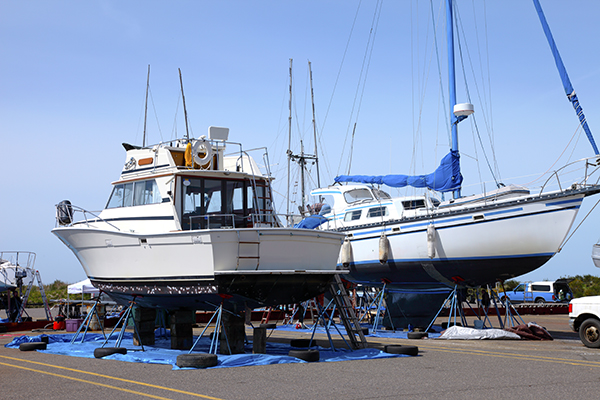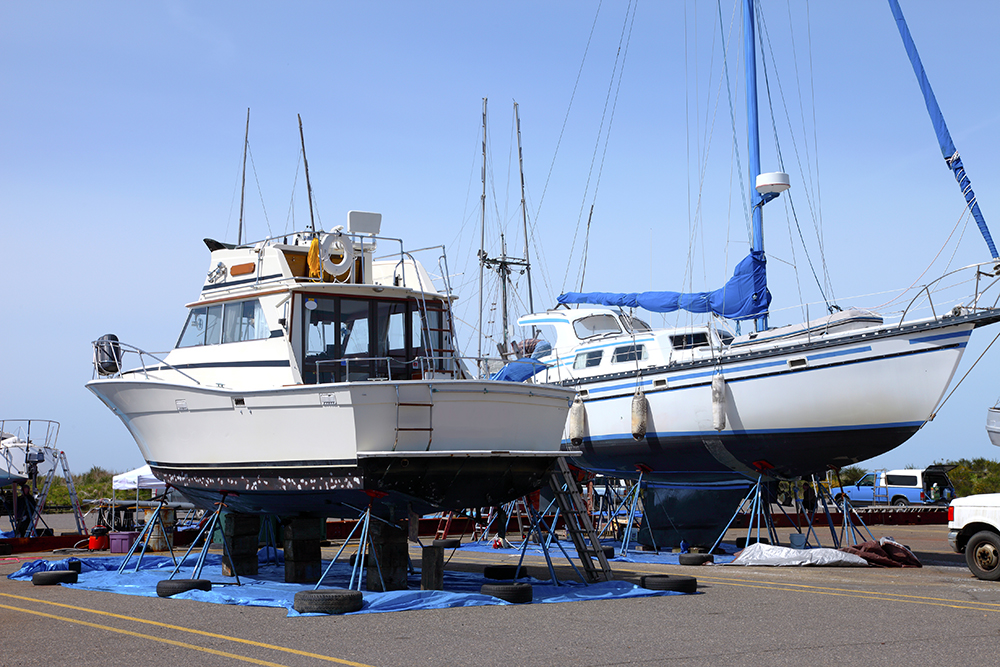

When autumn hits, it’s really time to think about winterizing your boat.
Everyone wants to get in a few more days of boating late in the season, so when the weather finally starts to turn, boatyards often get very busy hauling out and blocking boats. Sometimes it can get a bit rushed and careless. It’s important that you or someone who knows the boat is actually present when the yard picks the boat out of the water. If the yard staff know ahead of time that the owner or a representative is watching, they may be more likely to handle her with care. Here are a few more tips on winterizing your boat from one of our Marine Insurance carriers, ACE. We will present this information in 5 parts, you can view part 1 here, and part 2 here. This post addresses what to do During the Haulout.
Haul Her Properly
If the yard isn’t familiar with your boat, be sure to let the yard foreman or the lift operator know where it’s safe to set the straps so nothing on the bottom will be damaged when it is winterized. You probably won’t be painting the bottom until spring, but you may want to have the bottom pressure-washed as soon as your boat is out of the water and while the slimy residue and marine growth on the bottom is still soft.
If you have a sailboat with a keel-stepped mast and your mast is coming out of the boat this fall, have the partners cover loose and the wedges out ahead of time. Protect the interior surfaces near the mast to prevent any damage if the base of the mast swings around a bit while it is being lifted. Don’t forget to cover the partners once the mast is out.
As mentioned earlier, it’s advisable to remove the mast from a sailboat at least every few years, so everything can be inspected thoroughly. Additionally, with the mast out of the boat, there will be less windage and surface area to collect ice during winter storms. If the mast is removed, and the rigging has to be removed before it goes into storage, be sure to tag every piece with its location. The wind vane and windspeed cups are fragile, so they should be unplugged and taken home for safekeeping. Be sure to cover the connectors to keep out moisture and spiders’ nests!
Any gear or equipment that could attract thieves or be damaged by the elements should be removed from your vessel, and stored ashore in a safe place.
Correct Blocking Techniques
It’s very important that your boat is blocked properly. You should know ahead of time how the yard will block your boat, and you should insist that they use proper methods and equipment. The boat’s keel should be supported by solid wood blocking or sturdy wood cribbing, and her hull should be stabilized with proper tripod jackstands.
She should be blocked in a way that will allow any rainwater that may collect aboard to drain out through deck drains and scuppers. She should be supported by at least two jackstands on each side, and more than two may be needed depending on the length of the boat. Jackstands should be located where structural bulkheads meet the hull. Each leg of every jackstand should be supported by plywood or planking to keep the bases of the stands from sinking into the ground, especially if the yard surface is gravel. What may look like a solid surface in the fall could become soft during extended rainy periods. Each jackstand should be secured to the one on the opposite side of the hull by a safety chain that passes under the keel. Two very important things to remember about blocking your boat safely: No cinder blocks! No oil drums!
Our Marine Team knows boat insurance inside and out. You’ve put a lot of time, money and effort into your vessel, now let Wells Marine Insurance carefully protect your boat from perils. Visit us at wellsmarineins.com or stop by our Wrightsville Beach office.




Leave a reply